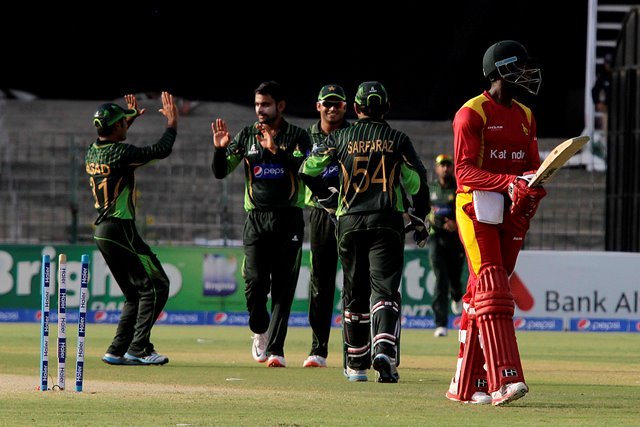
LONDON: The recently-concluded cricket series between Pakistan and Zimbabwe is being considered as a success in terms of somewhat restoring the confidence of other cricket-playing nations to visit the country.
It also has another important dimension: impact on business. Cricket, being part of the entertainment industry, contributes significantly to businesses directly and indirectly.
Sports television channels are the obvious winners, as their viewership graph moves up sharply.
Apart from electronic media, business activity around the cricket match venues increases considerably. The Gaddafi Stadium in Lahore, for example, where all the matches of the Pakistan-Zimbabwe series took place, was central to an increased business activity.
All the five matches (three One-Day Internationals and Twenty20s) attracted full capacity of the Gaddafi Stadium, 25,000-27,000.
Food consumption (beverages and snacks) is a major activity during and around such matches. If it is assumed that per capita consumption of food during the two T20Is was Rs500, then Rs27 million worth of food was consumed during the two matches. An additional estimated Rs16.2 million was consumed by the crowd before/after the matches in the restaurants around the stadium.
During the ODIs, estimated food consumption was Rs75 million for the three matches (assuming Rs1,000 per capita consumption). This gives us an estimated grand figure of Rs118.2 million.
Despite the Pakistan Cricket Board (PCB) having to pay hefty fees to the Zimbabwe cricketers and bearing all the expenses of the tour, amounting to about $500,000 in total, the PCB ran a surplus at the conclusion of the tour. The $500,000 was recovered by the sale of tickets alone, which was around Rs47 million. The revenue in terms of TV rights and sponsorships must have contributed to the surplus, if one assumes that PCB didn’t have to bear heavy expenses on security and law and order.
When cricket returns to normalcy in Pakistan, it is expected to stir a lot of business activity. In this respect, the example set by India must be seriously considered. Indian Premier League (IPL) has changed the commercial aspect of cricket altogether. Pakistan has a potential to emulate IPL’s success in the country, albeit not in the exact magnitude.
The success of the Zimbabwe tour should encourage PCB to start planning for a Pakistan Premier League. Any cricket player has a price – and the right price for each international player should be paid to bring them to Pakistan to play the proposed T20 tournament.
Although IPL has excluded Pakistani players, the country needs to keep its doors open by extending an invitation to their neighbours.
Pakistan should also attempt to use cricket as a tool to further deepen its business relationships with China. By involving China, Pakistan can play a strategic role to check the ever-increasing influence of India. The recent official visit of the Chinese president to Pakistan upset not only the Indian media but also the Indian government.
This may look like a far-fetched idea, given the recent performance of the Chinese national cricket team in the 2014 ACC Twenty20 Cup where it lost to all other participating teams, and hence stood last in the tournament. Pakistan has the required resources to offer coaching to the Chinese, and one should expect a great cricketing team emerging from China in a matter of few years if Pakistan helps it.
The writer is an economist and a Phd from Cambridge University
Published in The Express Tribune, June 8th, 2015.
Like Business on Facebook, follow @TribuneBiz on Twitter to stay informed and join in the conversation.






















































COMMENTS
Comments are moderated and generally will be posted if they are on-topic and not abusive.
For more information, please see our Comments FAQ